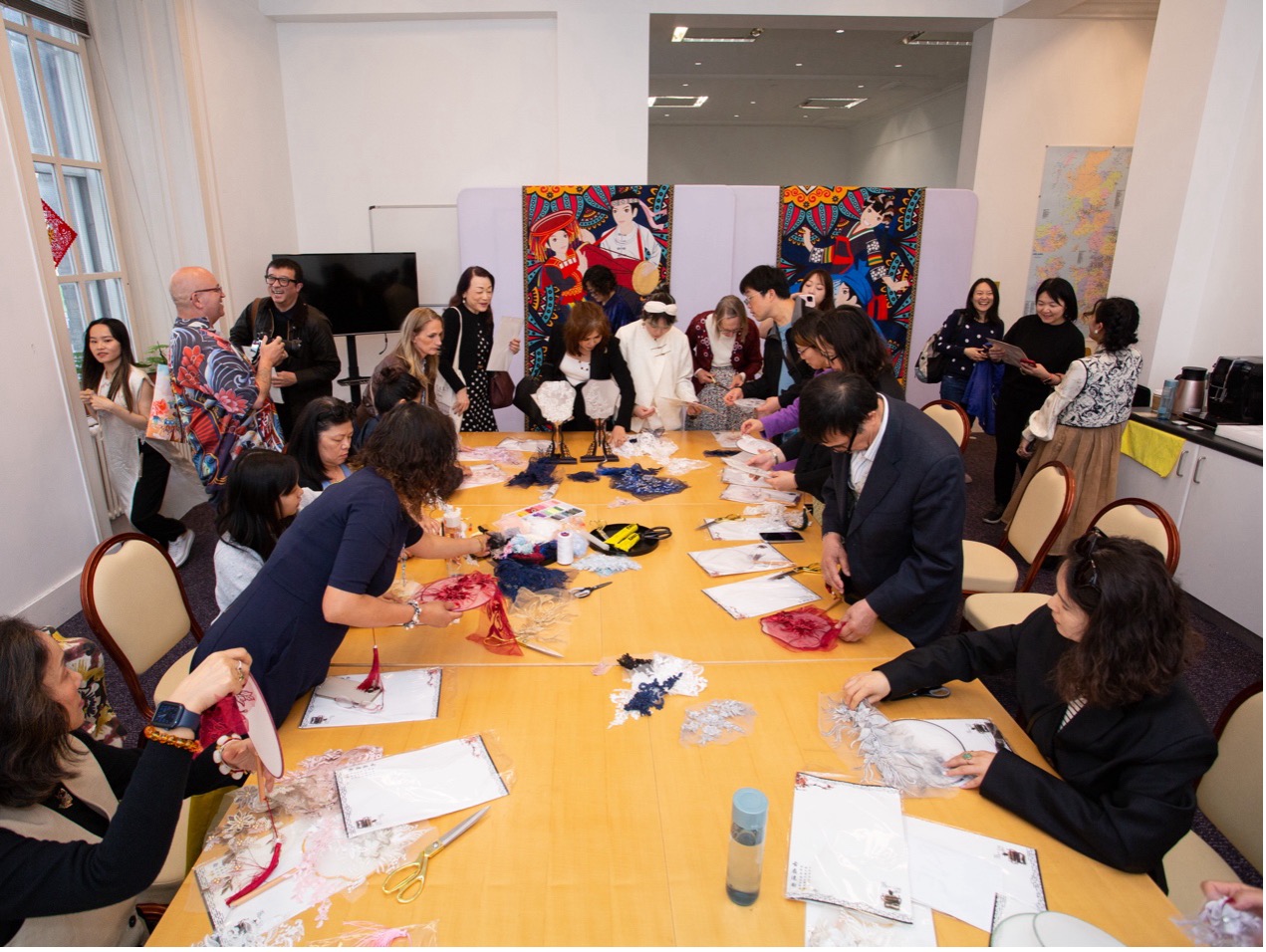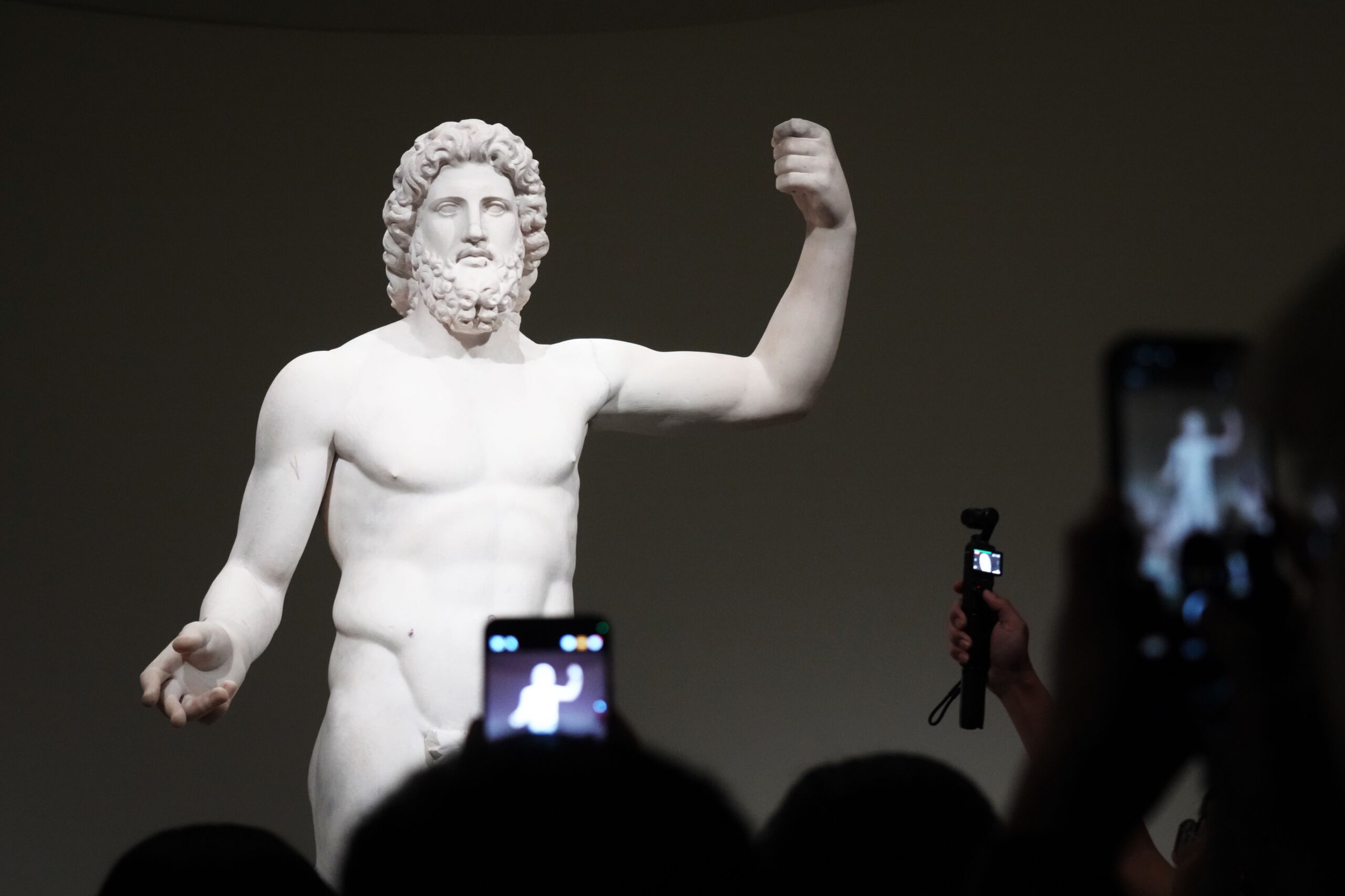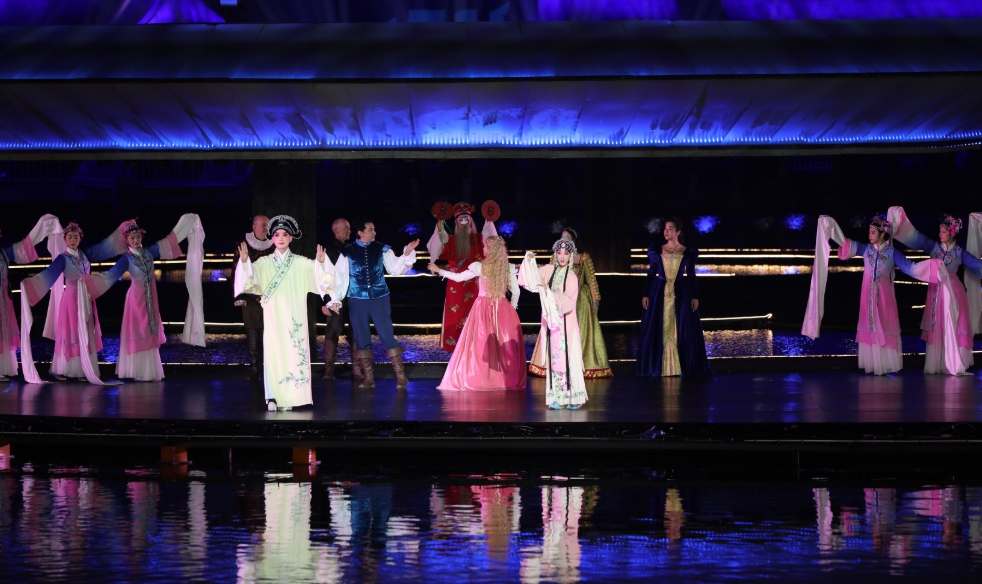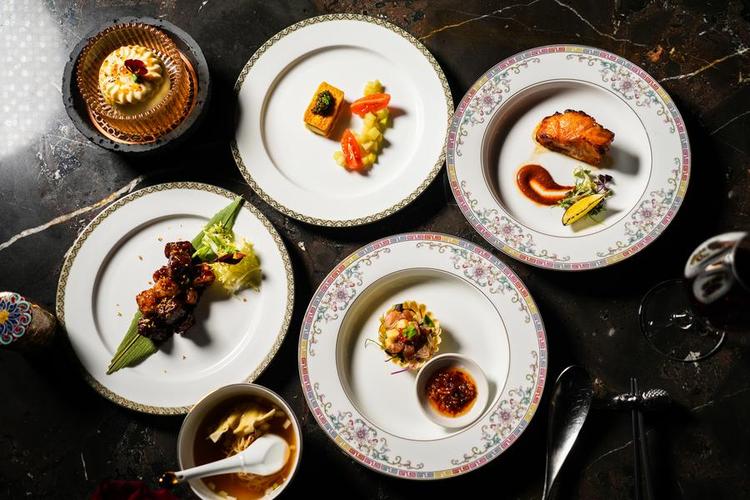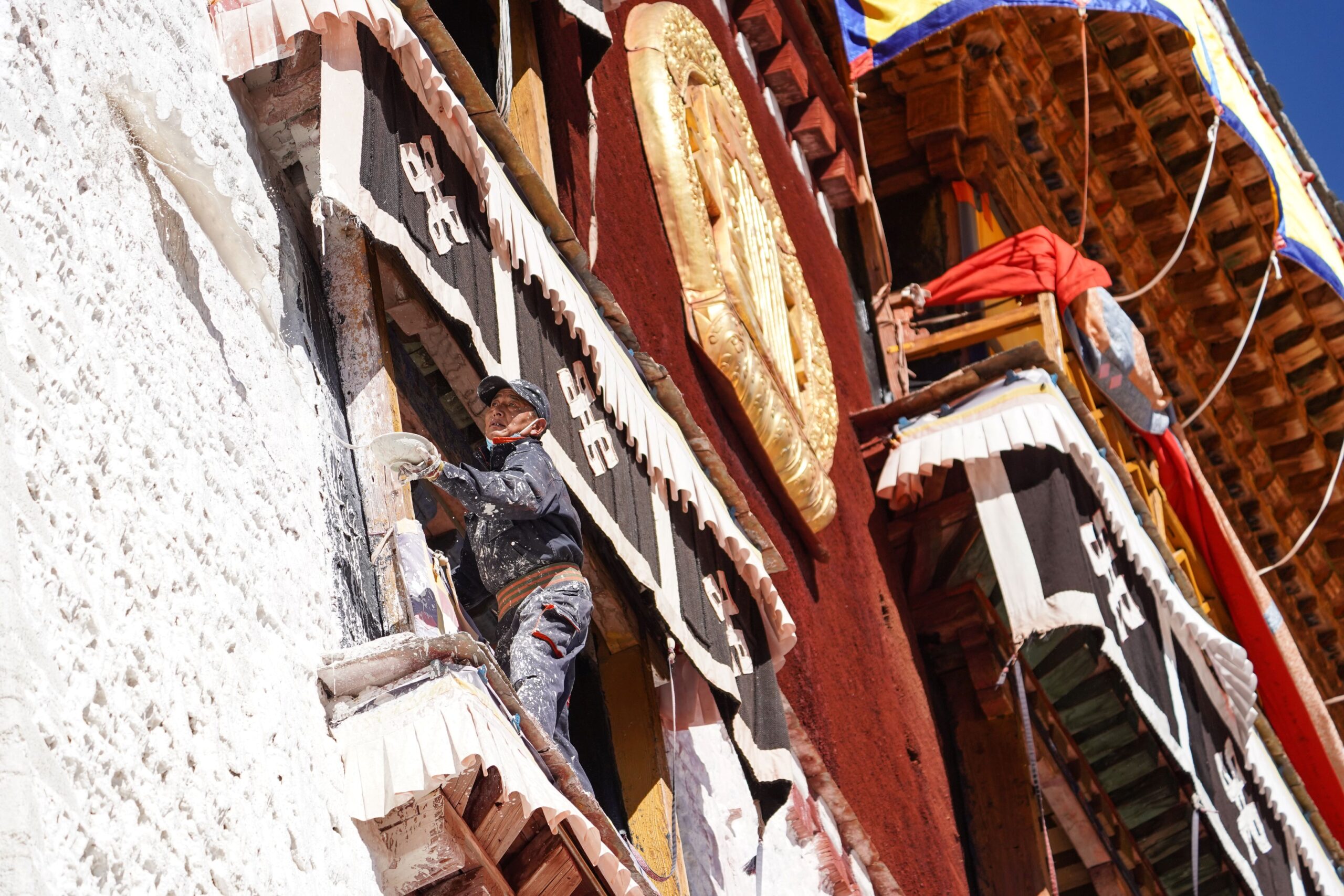Silk and handicraft workshops held at London Craft Week.
On May 15, during the 10th London Craft Week themed “Chinese Design: Harmony in Diversity”, Silk and Handicrafts-themed lectures and workshops were held at the former site of the Royal Mint.
Amongst the silk was Xiangyun Sha, an extremely rare type of silk that originated in China.  Also known as “Gan Silk” or “Gan Yarn,” Xiangyun Sha was included in China’s National Intangible Cultural Heritage list in 2008.
Also known as “Gan Silk” or “Gan Yarn,” Xiangyun Sha was included in China’s National Intangible Cultural Heritage list in 2008.
It has a history dating back to the Yongle period of the Ming Dynasty. Xiangyun Sha was once so valuable that it was priced akin to gold and exported as a treasure from ports. It is one of the most complex fabrics in the history of Chinese silk. Its production process includes soaking in herbal juices and covering with river mud unique to the Pearl River Delta. The creation of Xiangyun Sha involves 14 types of craftsmanship, 36 steps, and a waiting period of 1-3 years, depending on climate changes. A piece of high-quality Xiangyun Sha undergoes 25 to 30 cycles of soaking and sun-drying. This makes it one of the most ecological, sustainable, and environmentally friendly fabrics.
This traditional craft has now arrived at London Craft Week. Sourced from nature and nurturing nature, Xiangyun Sha is environmentally friendly. Preserving Xiangyun Sha holds significant social and cultural value.
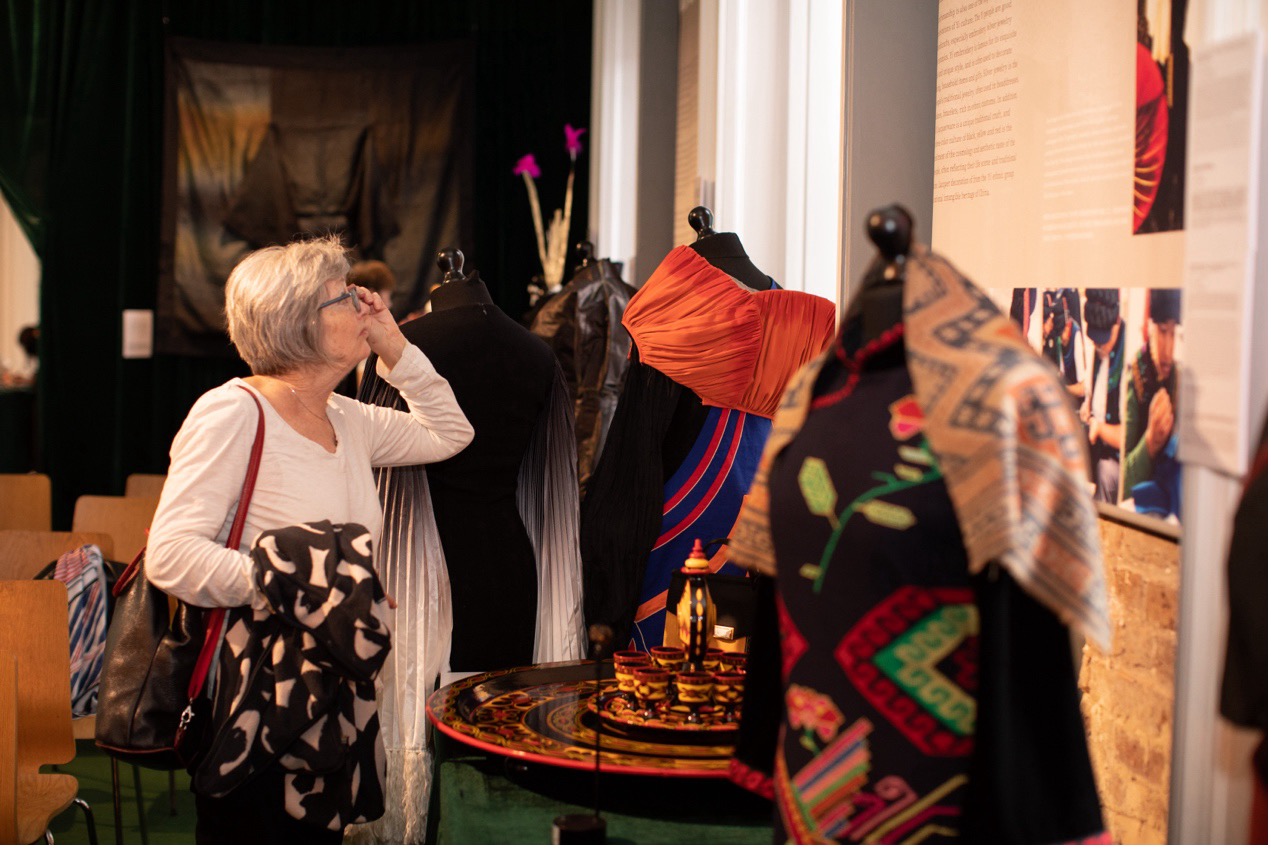
The British King’s Aide-de-camp Le May Chan OBE expressed her honor and pride in participating in the event. She highlighted that Chinese handicraft culture serves as a crucial link between different cultures and praised China’s pioneering role in silk production, emphasizing its unique elegance and the wisdom it represents. Traditional handicrafts are deeply rooted in China’s fertile soil and can be revitalized with the right environment, potentially aiding poverty alleviation. She hoped for more Chinese handicrafts to reach international audiences and for further development in economic, trade, and cultural exchanges between China and the UK.
Designer and artist Guan Guan shared her creative insights. She lead the audience into her artistic world by telling stories about her grandmother and her teacher, Zhang Fan. Her grandmother’s handmade embroidered insoles have accompanied her since birth, opening the door to her art. Zhang Fan introduced her to contemporary design and art. The daily companionship of the embroidered insoles as accessories made her contemplate the relationship between the body and art. This inspired a series of contemporary artworks. Her artistic concepts are based on emotions, reflections, and thematic artistic considerations. She expresses these aspects through embroidery, weaving, sculpture, and jewellery.
Cheng Shiyi, CEO of CraftPlus International Folk Art Design Platform, highlighted how unique cultural resources like embroidery, carving, and ceramics are being re-evaluated and inspiring well-known brands. Handicrafts have helped connect and support farmers, broadening community income sources. Cheng noted that China’s efforts in handicraft poverty alleviation focus on cultural governance. CraftPlus promotes the protection and innovation of traditional Chinese crafts by facilitating collaborations between international designers and traditional craftsmen. This creates new commercial opportunities and revitalizing endangered crafts.
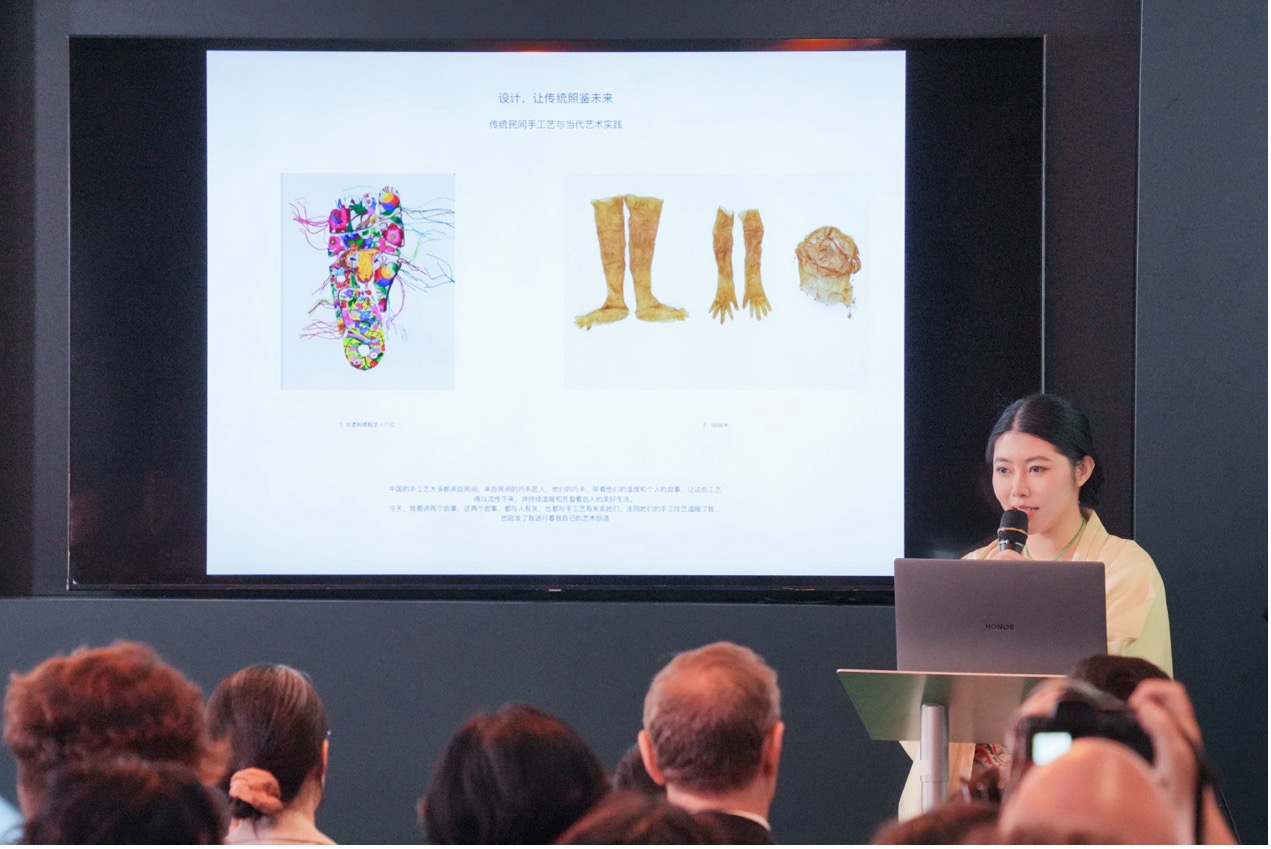
Professor Layton Reid, a Fellow of the UK Urbanization Institute and a member of the International Committee of the Royal Institute of British Architects, found the lecture and exhibition “extraordinary and fascinating.” He believes that China’s ancient culture and handicrafts are world treasures that continue to inspire. He remarked that the evolution of craftsmanship reflects the currents of history and that he learned a lot from the lecture. Silk, as a precious material, is highly popular worldwide. Increasingly, Chinese elements have become synonymous with fashion. Western designers hav epayed tribute to them at events like Paris and London Fashion Weeks. Porcelain, Xiangyun Sha, and murals each possess unique charm and embody the essence of historical civilizations.
Sir Cai Bozhou, a Fellow of the Royal Society of Arts and a lifetime member of the Royal Society of St. George, stated that silk is a significant symbol of Chinese culture and an important ancient Chinese invention, reflecting key aspects of Chinese civilization. He noted that silk weaving was a complex process in ancient times. Then, people valued silk for its unique texture and lustre. This made silk a major international trade commodity before the Industrial Revolution. Initially reserved for emperors, the rapid development of the silk industry allowed Chinese silk culture to spread to other countries. He expressed his honour in attending the event, observing the global reach of Chinese silk and the vibrant development of China’s handicraft poverty alleviation efforts.
Participants created their own unique beaded fans by combining beads, lace, gauze, and trimmings on white fan surfaces. Over 130 guests attended the event. This included Li Li, President of the British Cultural Society, and Yang Qingquan, Chairman of the Chinese Information and Advice Centre.
The “Chinese Design: Harmony in Diversity” themed exhibition serves as an influential international exchange platform. It hilights ceramics as a crucial symbol of Chinese civilisation.
The exhibition will be on view from May 13 to May 19, from 10:00 am until 4:30 pm. They hold it at the Royal Mint Court in London. It features twenty sets of clothing and jewellery from the Han, Miao, and Yi ethnic groups, twenty ceramic works from both the official kilns of Longquan celadon and the civilian kilns of Jingdezhen porcelain, alongside twenty sets of lacquerware. This showcase offers visitors a comprehensive look into the history and future of Chinese craftsmanship.
If you liked this article why not read: Jizhou Kiln Ceramics Made a Grand Entrance at the 10th London ‘Chinese Design: Harmony in Diversity’ Craft Week

